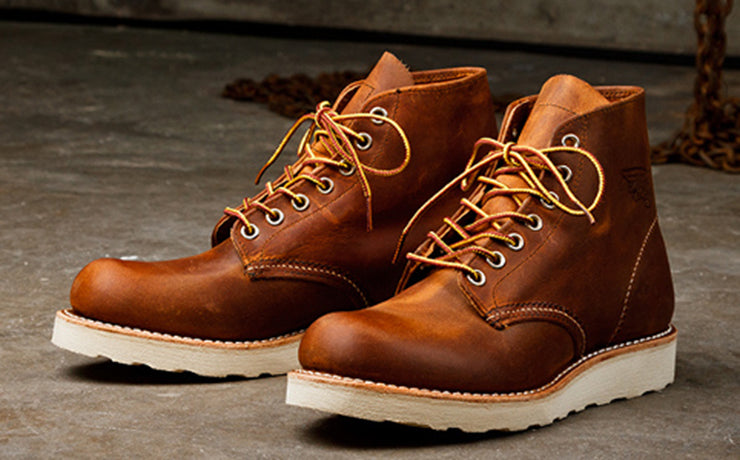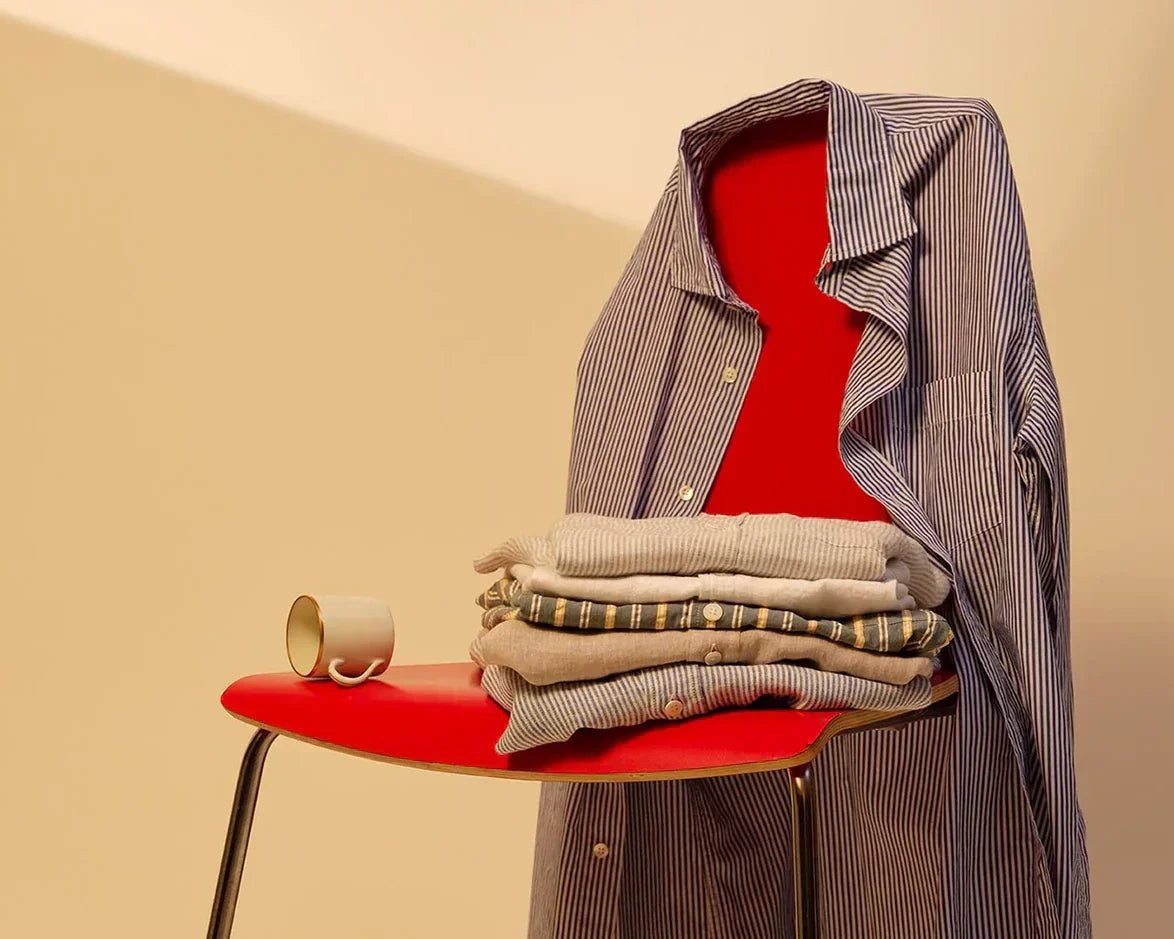
DENIM... PART 1
This is the blog I didn't want to write, which is probably why it's been a while since I've done a blog. We sell jeans at Frontiers, so there was always going to be a denim blog, but I've been putting it off. Why? Because the world of jeans and denim is deep... It's scary. It's multi-layered. The history and the nerdiness of it can be intense, because where there is serious history, there are experts, and there lies proper nerdiness. People will read this and be judgmental and although I'm not that worried about judgement (we sell jeans and to do that you need to be knowledgeable), I recognise that the more you learn, the less you understand, and denim is a bottomless pit.
I could talk about tweed, cord or flannel with more ease, but it would be less interesting to most people with a pulse. Denim, particularly jeans, are probably the most important article of clothing we wear and ever produced. Especially in this time where workwear is what we've all started wearing again: be it chore coats, chinos, tees, jumpsuits, dungarees or military wear... and jeans are the ultimate workwear. You damage your trousers more than any other item, usually by repetitive manual work, so as we burn through them, burst the seams, blow out the seat, crotch and wear down the inner thighs, as well as grind the knees out, and spill oil, paint and turmeric on them. We can even set them on fire: using an angle grinder, or whilst welding, or when jumping over a fire at a festival. We feel impregnable in a pair of jeans: you wouldn't try fire jumping in a rayon tracksuit and at least we have Darwinism to fall back on if you have considered that...
Jeans are the proletariat covering for the legs. Originally, they were cheap, sturdy and durable. Even at today's price of £160 for a proper, quality pair, that will buy your 7+ years of super hard daily wear and that's a good return.
'Pantaloon de Nimes'... The trousers of Nimes (in the south of France) were cut from serge - (a heavy twill cloth with a rough texture) which was originally a fine silken cloth. After a time, serge was made of cotton and naturally became a worker’s choice: more a twill running up and down, rather than on the bias, more like corduroy. Pantaloon de Nimes became ubiquitous cotton work trousers, and at some point, hard-working frontiers men (sic!) in the US of A started wearing them, especially gold prospectors (or at least hopefully, for romantic reasons).
One day an unknown man walks into a goods store and orders a pair of trousers, or so the story goes, and orders a pair of 'Pantallon de Nimes' but requests...
"Could you make them out of sailcloth and metal rivet the pockets and seams?'
Sailcloth would have been knocking about all over the place, used for tent making or tarpaulin covers, and would have been known for its hard-wearing qualities. The sailcloth used for these new trousers was from Genoa...hence 'JEAN'. Anyway, the store owner from our story takes the indigo-dyed cotton twill cloth and makes some trousers. Luckily, this store owner recognizes a good idea when he sees one, and contacts the small company making this cloth, up the road in California, to make more. That small company was called Levi Strauss. You can see where we are going here...
As a side note, this cloth is dyed indigo, from the plant 'indigo tinctoria' (a 2-metre-high bush), it was cheap, dyed deep with ease (which was economical), was antibacterial and was readily available, as the plant is found in Africa and Asia but will grow in habitats from Chile to Russia...
So, the USA are the inventors of the denim jean, albeit with the help of a Bavarian cloth weaver and a business-savvy dry goods shop owner, with a pair of French work pants made in the Italian cloth style, at the behest of an unknown grizzly customer who was sick of ruining his bib and brace trousers.
The USA churned these things out for prospectors, farmers, workmen, cowboys and factory workers. After a while, people began to wear their new pair for good or 'best', as is the way of things, with the broken-in pairs for dirty work. Jeans become the mainstay trouser of choice for the working class and blue-collar worker, and then become ubiquitous the world over, including here in the UK. They were probably introduced around WW2 and were gradually adopted by sub-cultures before becoming the norm.
How did the Japanese become the cultural custodians of traditional American denim?
The Americans, as they do, take their food, clothes and customs with them wherever they go. Go native? Nar, they pack it all on a warship, liner or cargo plane. When they docked their destroyers in Japan in 1945, they also took along their denim jeans and the Japanese took to them hard... obsessively so, from the word 'go'.
Little did they know (or more importantly, did the Americans know) that they would be the saviours of denim jeans some years later.
Where was I? You still reading? As always, the sub-cultures are always the first to grab hold of novelties (see French chore jackets today). As soon as jeans started changing hands, and the youth of Japan were knocking about in (quite expensive) blue jeans in the '50s, the Japanese denim wearers wanted to go the whole hog. What were the Americans wearing with these things? Other American clothes were imported and the 'Ivy League' style clothing worn by the sporting types at those universities were also introduced.
Whilst in the US the Ivy League clothing style is dying out and denim mills are modernising. They're making cleaner cloth (without nepps and slubby colouring) and as production needs to be faster - bigger, faster, wider mills are made. The old, slow, narrow looms are now obsolete. Old technology, unwanted and unloved, clickity-clackity machines (just like those in our beloved tweed mills) from a bygone era. But the Japanese love this characterful cloth, full of imperfections and character, so they start buying up those looms, importing them (no doubt through some entrepreneur making a quick yen for old scrap) and get producing it themselves. They make it how it's supposed to be made - not like the horrible, clinical, clean stuff from the '70s and '80s "now with added elastane and stretch".
(I should at this part, for our nerdy reader, say that yes, it's a myth that Levi Strauss sold their looms to the Osaka five, but the American looms did appear in the country. Also, at this point, you can look up the Osaka 5 yourselves, there's no way I'm starting on that lot here...!)
After a while, the USA realises they've lost a huge part of their heritage with modernisation - but wait... there are the Japanese, still making the good cloth and even cutting garments to the original American patterns. Like some kind of historical cultural custodians. Still to this day the Japanese make the best denim, best Yank military wear, ivy league clothing and other lost heritage clothing. You'll have to pay for it... but it's some of the finest casual clothing on the planet.
This is why I don't want to write about denim and jeans. The history is too complex to boil down to a couple paragraphs. There are 1000's of different kinds of denim, the history of cotton and all its attendant suffering, the different trades jeans were cut for, the innumerable subcultures that adopted and adapted them, varied cotton plant species and cultivation methods (like we have differing sheep that produce different yarns for wool knitting or tweed production), the different kinds of loom, the different jean cuts through the decades, the different companies who have produced them through the ages, and the different countries involved, from the USA to Japan, Italy, the Netherland, South America, and even little Scotland.
I'm also not even going to mention what selvedge is here, imagine that a jean/denim blog that doesn’t?!
It's like archaeology! What it is, is: social history, culture, sub-culture, agriculture, slavery, music, industry, food, work, hope and suffering all rolled into one garment.
And you want a disposable, skinny pair with elastane in them? Hang your head in shame!
Ill produce a guide to our jeans next week, our selection is quite utilitarian, but are the best selection to begin your journey into the world of quality jeans, with the correct choice and good care they will pay you back with years of comfort and look superb. oh, I’d better do a care guide too... what a can of worms, if you got this far, I suppose I'll do denim blog part 2, I'm so, so sorry.






